Quarter Sessions
Reference: Q/D/L detail Catalogue Title: Quarter Sessions Area: Catalogue Category: Public Records Description: Land Tax Returns: Chester Ward Middle
Covering Dates: 1759-1830
Catalogue Index
Use  and
and  to reveal/hide the structure of the catalogue index (requires Javascript to be enabled in your internet browser options). Click to jump directly to information at a specific level of the catalogue.
to reveal/hide the structure of the catalogue index (requires Javascript to be enabled in your internet browser options). Click to jump directly to information at a specific level of the catalogue.
- Quarter Sessions
Catalogue Description
LAND TAX RETURNSDuplicates of land tax assessments were required, by an act of parliament of 1744, to be deposited to form a record of freeholders eligible to elect members of parliament for the county. After the Reform Act of 1832 the qualification for voting changed and separate electoral registers were created.
The assessments record names of properties, name of occupiers and sums assessed. The proprietors were those whose freehold property would bring in an annual return of £2 in rents. The occupiers were chief leaseholders, not necessarily the tenants who actually lived on the property. Returns were made annually.
Unless otherwise stated the returns include all of the townships (or constabularies or smaller taxation areas) in each of the ward sub-divisions administered by Durham County. There were ten sub-divisions within the county plus three detached areas: Chester Ward East; Chester Ward Middle; Chester Ward West; Darlington Ward North West; Darlington Ward South East; Darlington Ward South West; Stockton Ward North East; Stockton Ward South West; Easington Ward North; Easington Ward South; Norham and Islandshire (Northumberland); Bedlington (Northumberland); Craike (Yorkshire).
The returns for County Durham are less informative than those for many other counties, and do not in most cases specify the name or extent of the property on which the tax was payable.
In no ward have the returns for every year survived. Some, including all those post-1832, are held by the Durham University Library Archives and Special Collections.
Physically the returns are held as boxes of hand-written papers (later ones on a pre-printed form) with each box containing one or more years worth of returns for the townships in one ward sub-division. The 1759-1760 records do not often give the occupier's name but may indicate the property; those for 1783-1830 usually give both owner and occupier but very few records give any property name.
See also EP/Stai 7/250-254 for Land Tax Schedules, 1768 - 1784
Further Historical Background
The Land Tax was introduced in England in 1692 as a means for raising government revenue and was not done away with until 1963. Land Tax records are of value to genealogists because they often list both property owners (proprietors) and tenants, placing them in both a parish and a year.
For a time, land tax records also served as voter records. The Dorset History Centre explains why this came about:
"Originally the Land Tax was a tax on personal estate, public offices and land... After 1698 it was usually levied only on land. From 1745, although in practice from 1780, it was used as a voting qualification - a land owner who paid Land Tax on freehold property worth £2 or more per annum had the right to vote. As a result the [land tax] returns had to be lodged with the Clerk of the Peace."
"The survival of the early Land Tax records is variable, but most counties have surviving assessments for the years 1780 to 1832, as these were the returns that had to be lodged with the Clerk of the Peace, and they can now be found with the records of the Quarter Sessions."
The Dorset History Centre points out that "since the assessment was written out in the same order each year it is sometimes possible to work backwards using the information of the owner or occupier, from the Tithe or Enclosure map, and the amount of tax levied to identify the property." Also, starting in 1798, land owners had the option to redeem their land from future tax by paying a lump sum. Their names may not appear on annual lists after the land was redeemed. For some smaller townships this may mean that there were no records at all.
Catalogue Contents
The indexing of these records was carried out by members of the Australian Institute of Genealogical Studies. We are grateful for their hard work in completing this immense task.
Chester Ward Middle (Ref: Q/D/L 13-24)Records organised by taxation areas based on historic townships in the parishes and chapelries of Chester-le Street, north of the River Wear, and Durham St Oswald:
Beamish (Tanfield)
Birtley
Broom (Broompark area)
Chester-le-Street
Crossgate (west of Durham City Centre)
Edmondsley
Elvet Barony (South-west of Durham City Centre)
Elvet Borough (South of Durham City Centre)
Framwellgate (north of Durham City Centre)
Harraton
Hedley (Lamesley)
Kibblesworth (Lamesely)
Lamesley
Lintz Green (Tanfield)
Pelton
Plawsworth
Ravensworth (Lamesley)
Urpeth
Waldridge


